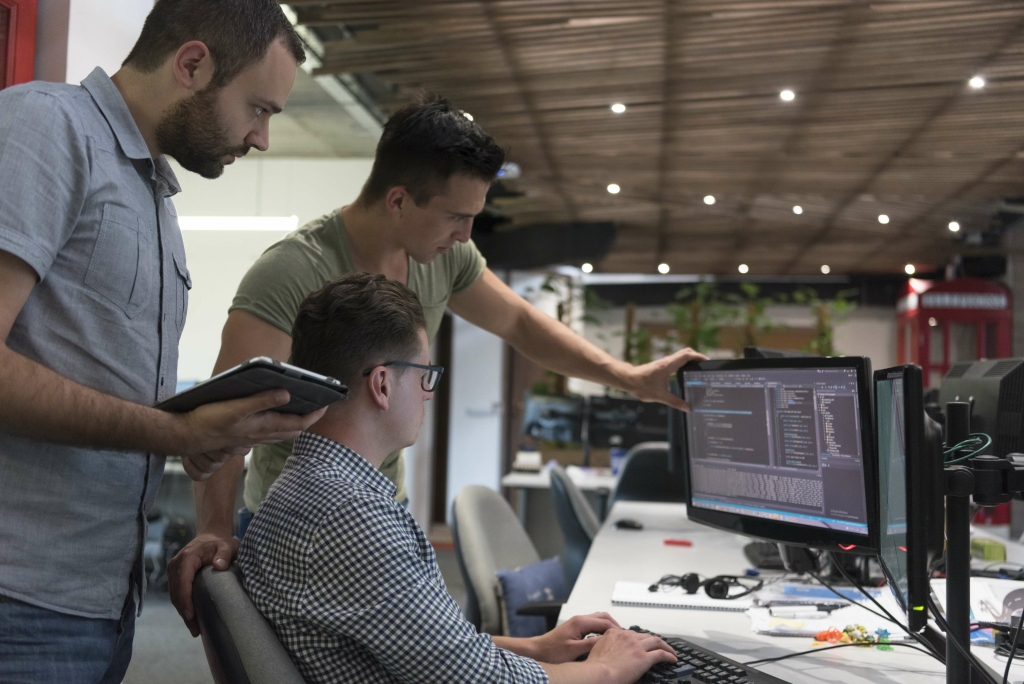You now have a simple Flask application in a Python file called app.py, in the next step, you will run the application to see the result of the hello() view function rendered in a web browser. Once you create the app instance, you can use it to handle incoming web requests and send responses to the user. You pass the value ‘/’ to @app.route() to signify that this function will respond to web requests for the URL /, which is the main URL. In a nutshell, both Flask and Django are popular open-source Python web frameworks.
- One of the major advantages that Django has is the community and ecosystem.
- To make fixing these problems easier, Flask provides a debugger when running the application in development mode.
- It is basically based on the WSGI toolkit and Jinja2 templating engine.
- Let’s create a couple of folders and files within flaskapp/ to keep our web app organized.
- If you want easy recruiting from a global pool of skilled candidates, we’re here to help.
For example, it can’t scale when servers support global as well as local proxies. In the end, the choice between Django and Flask should match your project’s scope and complexity. Additionally, it should align with your personal preferences as a developer. Consider the size of your project and the desired level of customization.
from flask import Flask
In this article, I’ll show you how to build a simple website, containing two static pages with a small amount of dynamic content. Upon completion, you’ll be able to use this sequence of steps to jumpstart your next Flask app. In this step, you’ll add a few routes to your application to display different pages depending on the requested URL. Python’s Flask micro web framework is well-liked and frequently used to create online apps. It offers a straightforward and adaptable method for developing Python-based web applications and APIs (Application Programming Interfaces).

Python’s Pandas library is used to clean and preprocess the data, while NumPy handles complex numerical operations. With Matplotlib, the application generates interactive and informative data visualizations, such as patient health trends and treatment efficacy. This fosters innovation, productivity, and, most importantly, results, making remote collaboration a powerful asset for your projects. Python offers a rich assortment of SEO tools and libraries that can assist you in elevating your website’s visibility in search engine results.
Learn the Flask Python Web Development Framework by Building an Ecommerce Platform
Flask’s framework is more explicit than Django’s framework and is also easier to learn because it has less base code to implement a simple web-Application. Flask is based on WSGI(Web Server Gateway Interface) toolkit and Jinja2 template engine. Launched in 2005, Django is a full-stack framework designed with the primary goal of making the development of complex database-driven websites easy. It facilitates secure and faster development by freeing developers from performing repetitive web development tasks. With many excellent features, it enables developers to create robust and high-performing applications. In this module, you will be introduced to Embeddable Watson AI libraries.
The practice project will provide you with a challenge to apply your programming skills and incorporate the IBM Watson libraries to build a text-based Sentiment Analysis tool. The final project, Emotion Detection based on the text input, will help you get your skills and proficiency assessed by your peers. For both projects, you will perform unit testing, static code analysis, and https://remotemode.net/become-a-python-developer/flask-framework-for-python-developers/ incorporate error handling. The request hits routes.py, which has code that maps the URL to a function. The function finds a template in the templates/ folder, renders it to HTML, and sends it back to the browser. You’ve also learned how to use dynamic routes to allow users to interact with your web application via the URL, and how to use the debugger to troubleshoot errors.
Install Virtualenv
On the left side of the screen, you’ll complete the task in your workspace. On the right side of the screen, you’ll watch an instructor walk you through the project, step-by-step. At the top of the page, you can press on the experience level for this Guided Project to view any knowledge prerequisites. For every level of Guided Project, your instructor will walk you through step-by-step.
